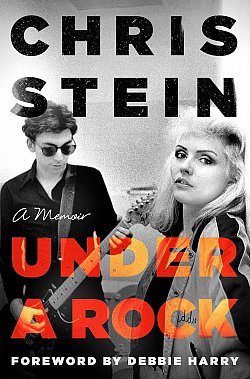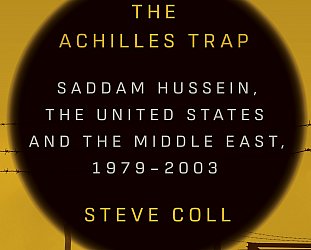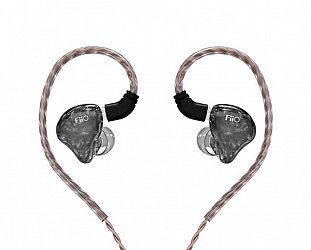Graham Reid | | 3 min read

There's a widespread and understandable belief that the chasm between San Francisco's hippies in the late Sixties and the New Wave kids hanging out at New York's CBGB's in the late Seventies was so wide as to be unbridgeable.
Two culture separated by a decade and very different ideas.
Yet Chris Stein of Blondie – one of the most successful of the skinny tie, dark suit and classy pop New Wave bands – shows in this collection of anecdotal snapshots, memories and sometimes gritty recollections of dark drugs and high times, he was there for both.
Growing up in New York – father from Russia, mother “some sort of Armenian-Romanian mash-up”, both Communist sympathisers – he ran with the kids in Brooklyn (Flatbush, where Neil Diamond and Barbra Streisand came from), was smart enough to sit and pass Mensa tests, began gradually immersing himself in drugs and popular music and – by the time he was living in and around the rundown Village as a teenager – was fairly streetwise with a band and long hair.
So far so NYC.
But when hippies rolled around he was a stoner who'd seen the Velvet Underground but headed off to San Francisco with some buddies, crashed in Haight-Ashbury, caught the Grateful Dead, Jefferson Airplane and a bunch of other bands and after three weeks went back to New York.
He saw the Mothers there and Zappa beckoned him back on the stage when he'd climbed up and been signalled off by a security biker. Then it was back to San Francisco for a short time and then home to Brooklyn.
Then he went to Woodstock and saw Sha Na Na and Hendrix.
This isn't the kind of life education you'd expect from someone who hung around CBGBs with the Ramones and Talking Heads, had connections with the good and great as well as the seedy and needy, and who formed a band with his girlfriend Debbie Harry.
Where Patti Smith wrote of her time in that dangerous and creative crucible of New York in singing poetry in Just Kids, Stein – who is also a photographer – offers paragraphs as snapshots, sometimes turning the lens from the mundane (finding a kitten) to the bizarre (finding a body).
All seem equal in his eye in a memoir which can be as insightful and self-aware as it is the opposite.
How to assimilate this paragraph?
“We did a gig opening for Television and at the end of the show it seemed like every guy in the place surrounded Debbie. We walked home and were set upon by a big guy who forced us at knifepoint into my apartment, tied us up in different rooms, raped Debbie, and stole a bunch of stuff. All these years later and I still want to kill this person, not a good feeling.”
The matter passes, they don't tell the cops.
Debbie Harry is in these pages but mostly just as a presence, almost a phantom at times (ironic given her prominence on the cover), as Stein tells his own recollections of the band, recording, touring, odd incidents recalled, experimenting with drugs and then getting serious about them.
The second half of his memoir -- after Blondie have broken and he and Debbie just pulled apart (no details given) -- is a long dark ride through seedy rooms, bad drugs, hustling for money, addiction, treatment, morphine dependency, film work, moving house, the band reforming, more dirty rooms . . .
And yet all the way in these 260 dense pages of anecdotes, half remembered incidents and times of blinding clarity, a parade of famous names and friends – Andy Warhol, Lou Reed, Iggy Pop, David Bowie, various Ramones, Jean-Michel Basquiat, Fab 5 Freddie and many, many others – walk through his life alongside dealers, fleeting friendships and so on.
By the end of Under a Rock however his literary Polaroids taken on the fly have come into focus and we get a more clear overview of his life and the times.
After decades of dependency he comes clean with the help of his wife Barbara. They have two children.
Chris Stein can be astute and thoughtful: “I'm grateful to have grown up in the 1960s,” he writes near the end. “There was no struggle to create what was creating itself. As a segment of the macrocosm, I'm caught up in the pursuit of nostalgia. The whole of Western culture is drenched in nostalgia constantly being mined.
“At best it forms a bridge to where I am now. Conversely it's a trap that negates the modern and makes me suspicious of the the onrush of the future. So much forfeiture is involved, it sometimes feels like everything is a sacrifice to some idol of loss.”
He speculates on human consciousness, the ubiquity of cellphones (which he likes but notes there are now fewer occult bookshops in Manhattan) and his memoir ends on a tragic note.
He acknowledges there is a tendency of presenting stories of addiction as colourful war stories, how he glamorised the addictions of artists he looked up to like Lou, William Burroughs and others. But he says he thought he presented his own drug dependency to his kids in a negative light and is wracked with guilt that his discussions might have been misconstrued.
“Going into writing all this I hadn't considered writing about so much addiction and death, but it was unavoidable. We lost our older daughter, Akira, 19 years old, to an accidental overdose a few months as of this writing. The family was crushed . . .
“I miss her terribly. We miss her terribly.”
UNDER A ROCK; A MEMOIR by CHRIS STEIN. Corsair $40





post a comment